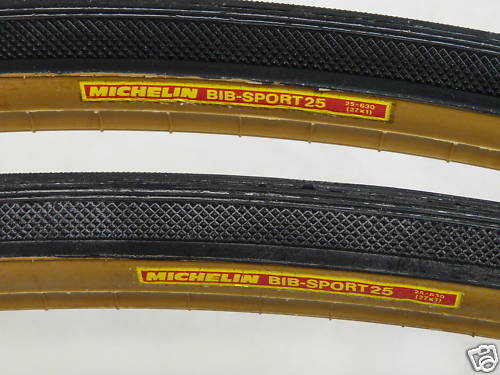new tyres demand new rims and in the long-distant past Dunlop
a) made both and
b) held patents concerning wire beads and rims to accept them.
Technically 'clincher' tyres were originally those without wire beads in the edges but that had a moulded lip in the tyre edge that engaged with a very large hook in the rim edge (which was weak as a consequence of the hook). The only reason they existed at all was because other manufacturers had to pay Dunlop a license fee to use their wire-bead designs. These clinchers were only held in position by the lateral component of the tyre pressure force and the result was not 100% reliable; crucially the tyres tend to come off at even slightly lower pressures, so a slow puncture could be a real hazard. With some setups you are forced to use a really high pressure to keep the tyre on the rim (think 70psi in a motorbike tyre, that kind of thing). Some cars and motorbikes used these tyres up to about WWII and vintage enthusiasts still run them. They are bloody dangerous and this has lead to the death of a vintage motorcycle rider in recent years.
So most folk used Dunlop pattern 'wire on' tyres/rims for everything but racing. Aluminium rims didn't become widely available until after WWII and these (like steel rims) didn't have hooked beads at all.
In the 1960s Moulton used HP tyres on hookless rims and these ran at ~90psi. Similar tyres were available in other sizes , down to a width of ~7/8". They were still heavier than tubs, nowhere near as fast, and were not secure on every type of rim.
When I started cycling (mid to late '70s) it was assumed that if you went racing you would use sprints and tubs, and plenty of folk used these all the time (which was a bloody nightmare, frankly). Most club riders rode otherwise on 27 x 1-1/4" tyres that fitted to rims such as the 'birmalux' one that didn't have hooked beads, but hooked bead rims were just coming in, eg the (later from ~1979 wolber) super champion Mod 58 rims. [BTW Mod 58 is strictly speaking a 27" size; the same rim section in 700C had a different model designation, and blue rathe than red labels .]
Tyres started to appear with two pressure ratings; with and without hook beaded rims, so about 70psi or 90psi respectively.
Modern HP rims and tyres arguably started with an alliance between mavic and Michelin, producing the Module E, Module E2 rims and the 'Elan' tyre respectively. These appeared in about 1976 and looked like sprints and tubs (if you squinted) and were only a bit heavier. They were slower and the wheels were weaker too but they were obviously much easier to live with.
The elan tyres were available in 21mm and 23mm widths, to fit either 700C (622) or 27" (630) rims. I had a Blue Dawes mirage which was fitted with E2 rims and elan tyres in 27" size.
The elan tyres were (like the Hi-lites that followed them) comfortable but fairly horrid; they were made from some kind of weird mesh fabric that could split if (say) you ran over a small stone. They also swelled up if you left the tyres inflated hard.
At about the same time the Japanese started to produce similar rims and tyres, and so did the Italians. Wolber produced a rim they called the 'super gentleman' rim (that in essence later became the Mavic MA2 when wolber sold their rim making business). Weinmann also made various hook-beaded rims. Late to the game Specialized had a japanese tyre manufacturer (IRC or Panasonic I think) make tyres to their designs and these were (for a while) quite a bit faster than any other HP tyre, if suffering from appalling wet grip and a stupid centre ridge that made the steering on many bikes feel horrible. Basically if you wanted to ride a TT and not use tubs in about 1983 to 1987 you used mavic rims (or arayas if you were feeling spendy), specialized (or Nutrak) tyres and earnestly hoped it didn't rain.
Serious racers used sprints and tubs, but might use HPs for training on. A popular tyre for training on was the Michelin bibsport; this had a much stronger carcass than 'elan' (or 'hi-lite' tyres), a rib and file tread and was 25mm in width.

In fact it was so strong that you could (and I did) tour with a load on using these tyres. Unlike the Japanese tyres there was more grip and the tyres behaved more predictably. Frankly I'd rather have eaten worms than ride in the winter on specialized tyres, they were ****ing terrible.
I would happily buy bibsport 25s today, even though they don't have any puncture protection; they work with tyre savers, come on and off Mod58 type rims without tyre levers (so punctures are but a slight annoyance) and handle very predictably.
Apologies in advance for errors and omissions, but that is my understanding /how I saw it at the time.
hth
cheers